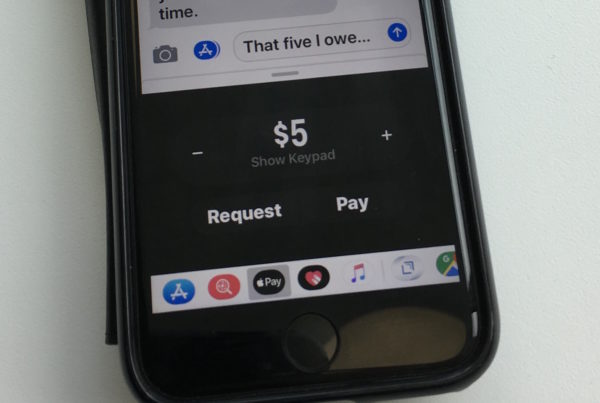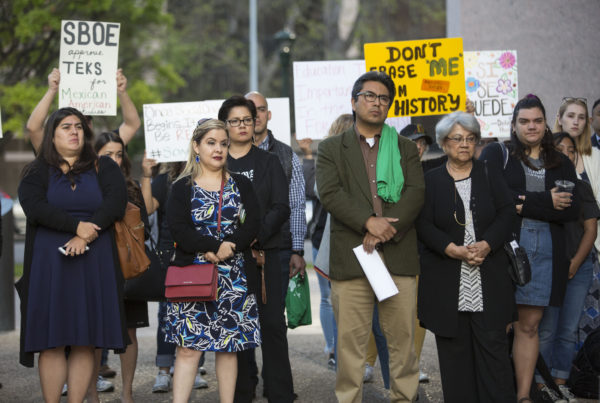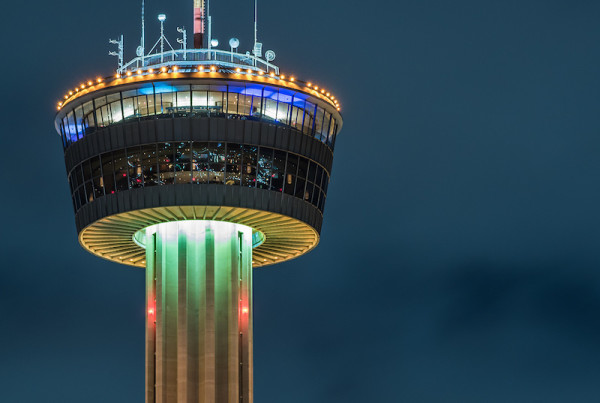About 250 Texas National Guard troops have deployed to the Texas-Mexico border. Texas’ Gov. Greg Abbott says he’ll eventually send more than 1,000. But even with the state’s leadership so supportive of any appearance of cracking down on illegal immigration, are the Guard troops really doing immigration enforcement? And how do folks who already work on border law enforcement perceive the influx of military personnel?
Manny Fernandez, the Houston bureau chief for The New York Times recently spent some time shadowing Texas National Guard troops in south Texas. He says the troops spent their time watching the border, not apprehending people trying to cross it.
“[Troops] were basically at sentry posts,” Fernandez says. “…These observation posts were basically a Humvee that was parked, and a bunch of troops standing around that vehicle, looking at the brush and looking at the river.”
Fernandez says the goal of the troops on the border now is to be visible.
“They want people to see them,” he says. “If you were standing on the Mexican side, you would see the Humvee, you would see the troops there that have their rifles with them, and their combat fatigues. They make an imposing visual sight.”
The idea is to free up more Border Patrol agents to intercept people crossing the border. Fernandez says he saw National Guard troops coordinating with Border Patrol agents to identify people attempting to cross the border, but that the troops don’t intercept them.
“They’re not set up to move from these observation posts,” Fernandez says. “The Humvees had these blocks behind the wheels…so those Humvees are parked there.”
At the same time National Guard troops were settling in on the border, dozens of southwestern border sheriffs gathered this week in Las Cruces, New Mexico for their annual spring meeting. And there’s debate on whether the national conversation about the border matches the reality on the ground.
Roy Boyd is chief deputy at the Victoria County sheriff’s office. When he heard the president was sending national guard troops to the border, he didn’t have a strong reaction.
“If you’re not from down here then yes it may seem like a big deal,”Boyd says. “But when you know the history and your family’s been down here a long time, you’ve seen it and it’s all a repeat.”
Boyd says his great-great grandfather was a Texas ranger. “He had a lot of interaction with the New Jersey national guard on the border in Brownsville in 1917.”
Lots of Texans along the border have had those interactions, for better or worse. Danny Dominguez is the Presidio County sheriff, in the Big Bend region. He says if troops show up “It’ll trigger a lot of emotions. What happened back in 1997.”
That’s when a Presidio county 18-year-old was shot and killed by Marines, during a drug surveillance mission.
Dominguez himself is open to the troops. He says his county’s geographically spread out and under-staffed, and could use the extra help. But he’s not so sure about the border wall.
“In my area it’s mostly mountains and canyons. It’s a natural-made wall. So it’s just a waste of money there,” he says.
On Wednesday, Attorney General Jeff Sessions addressed the group.
“The lack of a wall on the southern border is an open invitation to illegal crossings,” Sessions said. “The failure of Congress to move on the wall sends a message, I’m afraid, that we are not resolute.”
But Sessions focused much of his speech on what he calls loopholes in the law, and said he’d bring law and order back into the immigration system.
Pete Conticelli is a law enforcement coordinator in New Mexico. He says the country needs a multipronged approach.
“I don’t think there’s any one fix for what’s going on in the United States right now, across the four border states,” he says. “You can’t just say we’re just gonna put up a wall and that’s gonna help law enforcement and help the security of our country.”
You have to talk to the locals, he says. They know their areas best.















